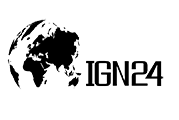Cardiologists have tried a variety of treatments to improve the prognosis of heart failure and prevent sudden cardiac death for over a century. Device therapies, for example, have been created over the last half-century. External cardiac defibrillators (ECDs) were first used in the 1960s to treat sudden cardiac arrest caused by ventricular fibrillation. Since then, cardiac resynchronization treatment (CRT) with or without defibrillators (CRT/CRTDs) and implantable cardioverter defibrillators (ICDs) have been indicated as significant device-based therapies for patients with moderate or severe heart failure. Cardiac resynchronization therapy is a treatment for heart failure in individuals who have uncoordinated ventricular contractions. Cardiac resynchronization treatment helps manage heart failure symptoms and reduce risk of consequences, such as death. An implantable heart device transmits small electrical impulses to the heart's bottom chambers (ventricles) to encourage them to beat in a more coordinated way. This enhances the ability of the heart to pump blood and oxygen throughout the body. Cardiac resynchronization therapy, when used in conjunction with a comprehensive treatment plan, has been shown to improve patients' quality of life by lowering heart failure symptoms, boosting exercise capacity, and allowing them to resume numerous everyday activities. Since its first approval in 2001 for treatment in patients with severe heart failure, cardiac resynchronization therapy (CRT) has seen a dramatic increase in utilization and since then there have undergone numerous technological advances for better results. For instance, Abbott offers multipoint pacing technology, which is designed to deliver multiple independent left ventricular (LV) pacing pulses from a single quadripolar lead, which provides more options and greater control in CRT response.
View Full Report Link: https://www.absolutemarketsinsights.com/reports/Global-Cardiac-Resynchronization-Therapy-Market-2021-2029-1047
During the COVID-19 epidemic and subsequent lockdowns in many nations, remote monitoring methods in cardiac resynchronization therapy have attracted growing attention. Patients with heart abnormalities, such as heart failure, are frequently elderly persons who have a number of other illnesses. Patients with heart failure were more sensitive to COVID-19 and had a more severe clinical course. Due to the same reason, during cardiac resynchronization therapy, medical practitioners and patients were strongly pushed to use more remote patient monitoring options. In the recent years, cardiac resynchronization therapy is increasingly using remote monitoring technology. According to a research trial, the typical period between the development of an arrhythmia and a medical evaluation might be cut in half, from 40 days to just 5.5 days, due to remote monitoring. Thus, the global cardiac resynchronization therapy market is improving as healthcare organization are introducing advanced equipment along with technologies for enhanced therapies.
In terms of revenue, cardiac resynchronization therapy market was valued at US$ 4038.35 Mn in 2020 growing at a CAGR of 5.6% over the forecast period (2021 – 2029). The study analyses the market in terms of revenue across all the major regions, which have been bifurcated into countries.
The detailed research study provides qualitative and quantitative analysis of cardiac resynchronization therapy market. The market has been analyzed from demand as well as supply side. The demand side analysis covers market revenue across regions and further across all the major countries. The supply side analysis covers the major market players and their regional and global presence and strategies. The geographical analysis done emphasizes on each of the major countries across North America, Europe, Asia Pacific, Middle East & Africa and Latin America.
Request Sample Copy of This Report: https://www.absolutemarketsinsights.com/request_sample.php?id=1047
Our 420+ Pages Report titled, “Cardiac Resynchronization Therapy Market - Global Insights, Growth, Size, Comparative Analysis, Trends and Forecast, 2021 - 2029”, will include extensive information on the following pointers:
- Global market size and forecast values (2015 – 2029), in terms of revenue (US$ Million) by segments/sub-segments
- Split of the market revenue (US$ Million) into all the relevant segments & sub-segments across all major regions/countries.
- Years Considered (2015 – 2029)
- Historic Years: 2015 - 2019
- Base Year: 2020
- Forecast Years: 2021 – 2029
- Market determinants and Influencing Factors
- Market Dynamics (Drivers, Restraints, Opportunities and Trends)
- Impact of Covid-19: Global Cardiac Resynchronization Therapy Market
- Macro-Economic and Micro-Economic Indicators
- Porter’s Five Forces Analysis
- Competitive Benchmarking: Global Presence and Growth Strategies
- Market Share Analysis, 2020
- Detailed profiles of major market participants operating in the market, encompassing information pertaining to company details, company overview, product offerings, key developments, financial analysis, SWOT analysis and business strategies
- Region specific reports including North America, Europe, Asia Pacific, Middle East & Africa and Latin America are also available in our repository.
- The reports can be provided in different languages including French, Korean, Japanese, Arabic, Spanish, German, Russian, Chinese and other languages.
Key Findings of the Report:
- Cardiac resynchronization therapy pacemaker (CRT-P) device type is estimated to grow at the fastest rate in the global cardiac resynchronization therapy market during the forecast period. In the last ten years, there have been increasing number of patients with cardiac and heart failures. The demand for CRT-P has risen as CRT-P pacemaker is an implantable cardiac resynchronization treatment (CRT) pacemaker that monitors the heart's rhythm, detects anomalies, and corrects them with electrical impulses. The introduction of leadless pacemaker devices has been a paradigm breakthrough in pacemaker technology and is proving to be a huge advantage in cardiac resynchronization therapy.
- Abnormal heart rhythm is anticipated to be the fastest growing therapeutic indication in the global cardiac resynchronization therapy market over the future years. A cardiac resynchronization therapy is usually recommended if the rhythm is abnormally slow because the heart’s lower chambers (ventricles) are beating out of sync or enlarged heart or cardiomyopathy. Thus, in order to resynchronize the heartbeat, cardiac resynchronization therapy (CRT) uses a special pacemaker called a CRT pacemaker or a biventricular pacemaker.
- Due to the rise in ageing population, there has been an increased demand for cardiovascular critical care, which is reflected in trends in the use of critical care in general. Specialty cardiac centers are forecasted to be the fastest growing segment in the global cardiac resynchronization therapy market. For instance, Cleveland Clinic offers CRT-HF Follow-Up Clinic, is a specialized, one-time, multidisciplinary clinic designed for all patients who received a CRT pacemaker or defibrillator. During the visit, a team of specialists assess how well the device has helped the patient and whether there is a way to improve cardiac drugs or device settings. Thus, with advanced healthcare assistance, the global cardiac resynchronization therapy market is boosting globally.
- Asia Pacific is anticipated to witness fastest growth in the global cardiac resynchronization therapy market over the period of next eight years. In the last few years, the major cause of death in Asia is cardiovascular disease (CVD). Government and healthcare organizations are introducing various effective policies and initiatives in the Asian countries to address the detrimental effects of CVD on public health. Moreover cardiac resynchronization therapy is becoming more prevalent due to increasing training and education of electrophysiologists, and many patients have benefited from the procedures. Healthcare organizations are investing into technological advancements and research & development to promote cardiac resynchronization therapy.
Enquiry Before Buying: https://www.absolutemarketsinsights.com/enquiry_before_buying.php?id=1047
Global Cardiac Resynchronization Therapy Market:
- By Device Type
- Cardiac Resynchronization Therapy Defibrillator (CRT-D)
- Cardiac Resynchronization Therapy Pacemaker (CRT-P)
- By Therapeutic Indication
- Heart Failure (Moderate to Severe)
- Abnormal Heart Rhythm
- By End Users
- Hospitals & Clinics
- Specialty Cardiac Centers
- Ambulatory Surgical Centers
- By Region
- North America (U.S., Canada, Mexico, Rest of North America)
- Europe (France, The UK, Spain, Germany, Italy, Nordic Countries (Denmark, Finland, Iceland, Sweden, Norway), Benelux Union (Belgium, The Netherlands, Luxembourg) and Rest of Europe
- Asia Pacific (China, Japan, India, New Zealand, Australia, South Korea, Southeast Asia (Indonesia, Thailand, Malaysia, Singapore, Rest of Southeast Asia) and Rest of Asia Pacific
- Middle East and Africa (Saudi Arabia, UAE, Egypt, Kuwait, South Africa, Rest of Middle East & Africa)
- Latin America (Brazil, Argentina, Rest of Latin America)
List of Key Players in the Global Cardiac Resynchronization Therapy Market:
- Abbott
- BIOTRONIK Asia Pacific Pte. Ltd.
- Boston Scientific Corporation
- MEDICO S.R.L.
- Medtronic
- MicroPort Scientific Corporation.
- Other Market Participants
Purchase the Report: https://www.absolutemarketsinsights.com/checkout?id=1047
Related Reports:
- Global Third-Party Chemical Distribution Market 2021 – 2029
- Global Renewable Energy Trading Market 2021 - 2029
Contact Us:
Company: Absolute Markets Insights
Email Id: [email protected]
Phone: IN +91-740-024-2424 , US +1-510-420-1213
Contact Name: Shreyas Tanna
Website: www.absolutemarketsinsights.com/

